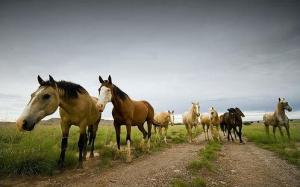Chiropractic is an integral part of the holistic trend in animal health care. A holistic philosophy stresses the integration of all the external and internal influences on the organism in the study of health and disease. Holistic therapies are designed to intervene at the appropriate level and to work with, not against, the inborn homeostasis of the organism. This differs from pure allopathic philosophy that treats symptoms, often separating and isolating those symptoms from the entire health paradigm of the patient.
Chiropractic offers tremendous potential in animal health care. It belongs in the health care spectrum along with medicine, surgery, acupuncture, homeopathy and other such modalities. Chiropractic care does not pretend to encompass the entire study of health and disease, but it does offer alternative explanations for disease and provides complementary therapy.
The foundations of chiropractic philosophy are based on the intimate relationship of the spinal column to the nervous system, as well as the role of the spinal column in biomechanics and movement.
The Postgraduate Animal Chiropractic Courses offered by Parker University is known for being on of the most thorough in the United States . Most of the knowledge used to cultivate the animal chiropractic program was extrapolated from the human chiropractic profession. Combined with the knowledge from both the Veterinary and Chiropractic profession, Animal Chiropractic is an up and coming field that is gaining both credibility and acceptance. Both functional theories and techniques are used to explain clinical results. The last fifteen years have demonstrated the tremendous benefit that animals receive from the integration of animal chiropractic into veterinary clinical practices all over the world.

How Chiropractic works
Chiropractic is a health care discipline that emphasizes the inherent recuperative power of the body to heal itself without the use of drugs or surgery. The practice of chiropractic focuses on the relationship between structure (primarily the spine) and function (as coordinated by the nervous system) and how that relationship affects the preservation and restoration of health.
In addition, Doctors of Chiropractic recognize the value and responsibility of working in cooperation with other healthcare practitioners when in the best interest of the patient.
The Association of Chiropractic Colleges continues to foster a unique, distinct chiropractic profession that serves as a health care discipline for all. The ACC advocates a profession that generates, develops, and uses the highest level of evidence possible in the provision of effective, prudent, and cost-conscious patient evaluation and care.
The purpose of chiropractic is to optimize health. The principle that guides this is the body’s innate recuperative power which is affected by and integrated through the nervous system. The practice of chiropractic includes the establishment of a [chiropractic] diagnosis, the facilitation of neurological and biomechanical integrity through appropriate chiropractic case management, and the promotion of health.
The foundation this is built on includes philosophy, science, art, knowledge, and clinical experience. The chiropractic paradigm directly influences education, research, health care policy and research, relationships with other health care providers, professional stature, public awareness and perceptions, and patient health through quality care.


